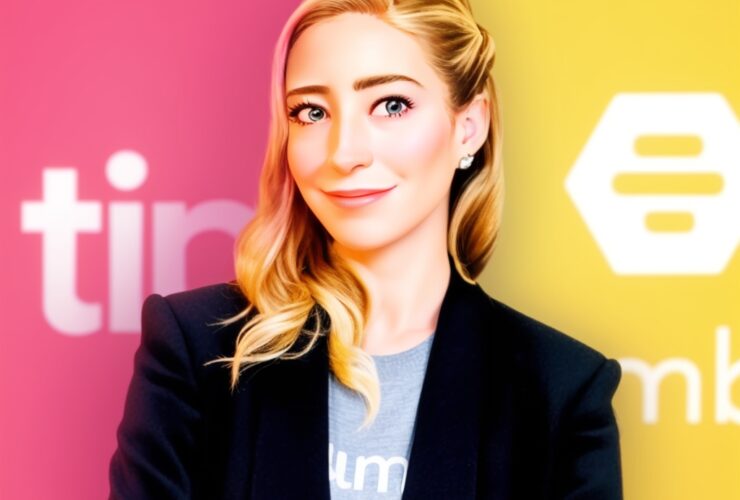The Freeterprise Business Model: Turning Free Users into Paying Customers
The internet has enabled many great things, but one of the most powerful is the ability to offer free products and services at scale. In the past, any business that wanted to give things away for free faced limitations – you could only reach people in your local area and the costs often outweighed the benefits.
But the online world has changed that. Delivery is virtually free, reaching millions of potential customers is easy, and free offerings can now be a strategic part of many business models.
We even have a name for this type of model: Freeterprise. The model combines “free” and “enterprise” to describe companies that offer free versions of their products to attract users, and then convert some of those users into paying enterprise customers.
This model has been successfully utilized by companies like Zoom, Slack, Mailchimp, and more. They’ve built tremendous businesses by leveraging the power of free.
In this post, we’ll dive deeper into the freeterprise model: how it works, who it’s best suited for, and tips for executing it effectively.
How the Freeterprise Model Works
The core premise of freeterprise is pretty simple:
- Offer a free product that provides real value to users
- Build a large user base including both individual consumers and some businesses/enterprises
- Convert a small percentage of those users into paying enterprise customers
The free product serves as the top of the funnel – bringing in a high volume of users and traffic. Even if only say 1-5% convert to paid, that can still result in a lot of customers due to the sheer number of people using the free version.
This works because the cost to deliver most software products is near zero. So even a low conversion rate can make the model financially viable.
Zoom is a perfect case study here. They offered their video conferencing software for free to anyone who wanted it. This let them rapidly acquire millions of users. Then once people and businesses were hooked, Zoom converted them to paid plans with more features, capacity, security, and customization.The free product drove the top of the funnel, while the paid offerings tapped into monetization further down.
This model has been successfully utilized by companies like Zoom, Slack, Mailchimp, and more. did something very similar with their messaging platform. The free version got teams addicted, then Slack converted them to paid plans by charging for historical messages, additional integrations, higher usage limits and so on.
Of course, the conversion rates and dollars per customer can vary substantially depending on the business. But the fundamental anatomy holds true across many different companies leveraging some version of freeterprise.
Who is the Freeterprise Model Right For?
We’ve established the basics of how the freeterprise model works. But who is this model best suited for? When does it make the most sense to utilize free offerings to help drive a business?
There are a few key criteria:
1. Low marginal costs
For freeterprise to work, your business needs to be able to deliver the free product without accruing substantial per-user costs. Software and other digital products are perfect for this because their marginal delivery costs are near zero. Whether you have 1 user or 1 million users, your incremental costs don’t rise much.
Compare this to say a manufacturer of physical goods. Every free product you gave away would accrue direct costs. So the model doesn’t work as well.
2. Clear enterprise version
You need a clear path for converting free users into paying enterprise customers. There needs to be a logical upgraded version of your product that offers enough extra value worth paying for.
If there’s no way to effectively monetize those users down the funnel, the huge volume of free usage won’t do you much good.
3. Virality
Having a viral, free product can dramatically accelerate uptake and word-of-mouth distribution. Dropbox grew rapidly by incentivizing referrals and offering free storage. This virality conditioned users to invite friends and get them hooked on the free product as well.
Virality acts like a multiplier, compounding the reach and adoption of your free offering. But be aware this can also work against you if users have a bad experience.
4. Enterprise capable
This might seem obvious – but your product needs to be just as capable of meeting enterprise needs as serving individual consumers. The features and functionality can’t be so basic that businesses have no reason to upgrade and pay.
Slack is a fantastic example here. The free version delivered 80-90% of the utility most enterprises would want. So when teams got hooked, migrating to a paid plan with extra security, integrations, administrative controls, etc was a no-brainer.
Check those 4 boxes and there’s a good chance freeterprise makes strategic sense for your business.
Tips for Executing the Freeterprise Model
Assuming freeterprise aligns well with your product and customers, how do you execute this model successfully?
Here are 5 key tips:
1. Lead with a generous free offering
Don’t be afraid to give away a robust, feature-rich free product. Yes, you may have some super users that consume substantial resources. But remember – the free product is at the top of your funnel. Restricting it too much hampers viral growth and conversions down the line.
Be generous with limits and capabilities in your free offering. Make it genuinely useful for as many people as possible.
2. Strategically highlight differences in the paid version
You don’t want to intentionally hide what customers get when they upgrade to paid plans. But strategically showcase those differences in places where people recognize the need.
For example, e-commerce stores display upgraded shipping options at checkout when customers realize they need faster delivery. Streaming video services highlight the lack of ads in paid versions when free users get annoyed by repetitive ads.
Look for moments when users see gaps that paid plans can fill. Then prominently feature your offerings there.
3. Leverage network effects
Network effects refer to products becoming more useful as more people use them. Social networks are a prime example. The more friends and family on a given network, the more useful it becomes.
Leverage these effects with your free offering – get as many users onto the platform as possible. Virality helps. This not only directly boosts conversions, but makes the product stickier and harder to leave as the user base grows.
4. Offer business-specific functionality
Ensure your paid enterprise version provides real business-specific value – not just individual features. Support complex organizational permissions, priority support channels, unlimited data history, centralized billing, and provisioning, group reporting…these types of things that serve enterprise needs specifically.
Individual consumers have little need for those capabilities – but they make your product much more compelling to businesses.
5. Streamline conversion process
Don’t make it difficult for a user to convert from your free product into a paying customer. Clear pricing, obvious upgrade paths, seamless billing integration…remove as much friction as possible from this process.
You want users who recognize the value of your paid offerings to transition over in a few clicks seamlessly. No complicated sales process or excessive paperwork to wade through.
Make it easy to pay you!
Difference between Freeterprise and Freemium?
The key differences between freemium and freeterprise business models are:
Freemium Model:
- Focuses on converting individual consumers from free to paid plans
- Typically converts only a small percentage of users (1-5%)
- Free offering has limited capabilities to incentivize upgrading
- Monetizes through consumer-oriented premium features
Freeterprise Model:
- Focuses on converting businesses/enterprises from free to paid
- Converts a higher percentage of business users (5-15%)
- The free offering is more robust and feature-rich
- Monetizes through features tailored specifically to enterprise needs like support, security, integrations, etc.
In summary:
- Freemium converts more consumers with restrictions driving upgrades
- Freeterprise converts fewer users but at higher dollar values by serving enterprise needs
The core difference is freemium targets individuals to upgrade for consumer features, while freeterprise targets enterprises to upgrade for business capabilities. But both utilize free offerings to acquire users and drive conversions.
Some companies leverage both models, converting both individuals and businesses to paid plans from a large free user base.
Conclusion
Leveraging free products to acquire users and ultimately convert them into paying enterprise customers is an extremely powerful model – when applied correctly.
We call this strategy freeterprise, and hugely successful businesses like Zoom and Slack have proven their merit.
Of course, there are also pitfalls to the approach if not thoughtfully executed. Hopefully, this overview gave you a better understanding of how to employ freeterprise for your own business. Delivering robust free products with clear upgrade paths can be difficult to pull off, but highly rewarding when done right!




